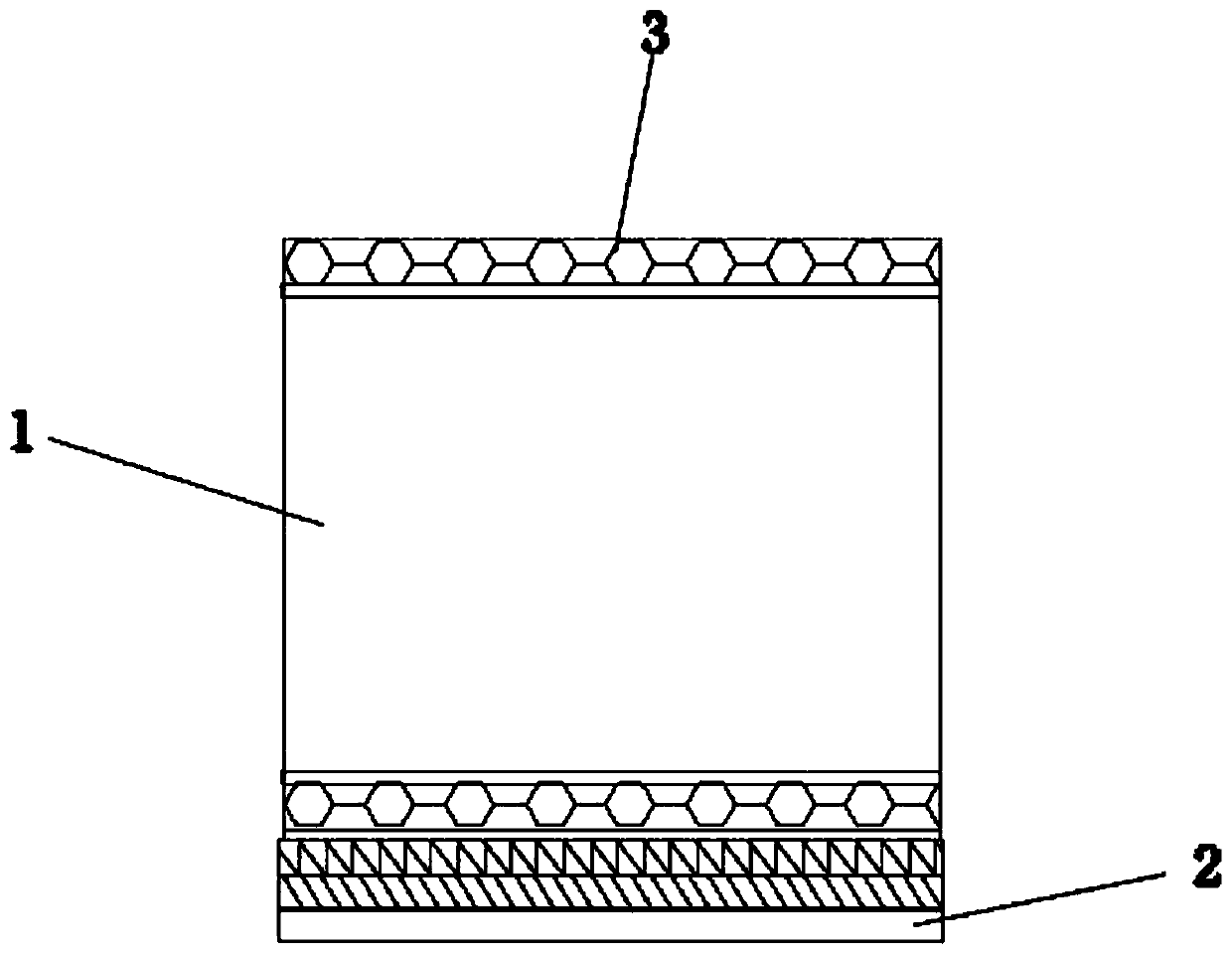Insect breeding device and using method thereof
A technology for raising insect cages and adults, which is applied in animal husbandry and other directions, can solve problems such as being unsuitable for mass breeding, difficulty in separating eggs, and errors in egg production, so as to reduce labor workload, accurate test results, and fast cleaning speed. Effect
- Summary
- Abstract
- Description
- Claims
- Application Information
AI Technical Summary
Problems solved by technology
Method used
Image
Examples
Embodiment 1
[0024] (1) Open both ends of a sealed cylindrical fresh-keeping box (diameter 64mm, height 120mm, wall thickness 0.02mm), and then seal the two ends with 40 mesh nylon net to make an insect cage, and place one end of the insect cage The oviposition device with fresh cotton leaves attached to the mat is fixed with rubber bands, about 15 pairs of adults are placed in the insect cage to feed and lay eggs, and the insect cage with the adults is transferred to another mat with fresh cotton every day. Continue to feed and lay eggs on the oviposition device of cotton leaves, use a fine brush to pick the eggs from the cotton leaves and filter paper in the replaced oviposition device, put them into a device suitable for collecting insect eggs, and store them properly. The insect device was placed in the incubator (temperature 26±1°C, relative humidity 75%), and the light cycle was set to L:D=16:8.
[0025] (2) Under the condition of 26±1°C and relative humidity of 75%, the eggs of the ...
Embodiment 2
[0028] (1) Open one end of a sealed cylindrical fresh-keeping box (diameter 64mm, height 120mm, wall thickness 0.02mm), pierce about 200 holes with a disposable syringe needle (10ml) on the fresh-keeping box, and then use a 40-mesh nylon mesh Seal one end of the opening to make an insect cage, put the end of the insect cage sealed by nylon mesh close to the oviposition device with fresh cotton leaves, bind and fix it with rubber bands, and put about 15 pairs of adults in the insect culture Feed in the cage, and transfer the insect cage with adults to another oviposition device with fresh cotton leaves every day to continue to eat, and use a fine brush to gently remove the feces from the filter paper in the replaced oviposition device. Sweep it down, put it into a device suitable for collecting adult feces, store it properly, put the insect culture device in the incubator (temperature 26±1°C, relative humidity 75%), and set the photoperiod as L:D=16:8 .
[0029] (2) At 26±1°C ...
Embodiment 3
[0032] (1) Open a circular hole (7.5mm in diameter) at the end of the round table-shaped fresh-keeping box (diameter 64mm, height 80mm, wall thickness 0.02mm) with a smaller radius so that a 1ml tip is inserted vertically. The large end is open, so that the end with a larger radius and the insect cage can be vertically and seamlessly joined and fixed to form an insect fetching device.
[0033](2) The upward tendency of the leaf beetle can be used to place the insect cage on the lower part, and the round table-shaped fresh-keeping box for picking insects is placed on the upper part. Close and fix the adults in the insect cage so that the adults in the insect cage climb up along the wall, and finally climb into the top 1ml suction head. The 1ml suction head with the adults can be removed to obtain the test adults. After removing the suction head Another 1ml tip should be plugged vertically into the circular hole to prevent adult worms from escaping.
[0034] (3) After the insec...
PUM
 Login to View More
Login to View More Abstract
Description
Claims
Application Information
 Login to View More
Login to View More - R&D
- Intellectual Property
- Life Sciences
- Materials
- Tech Scout
- Unparalleled Data Quality
- Higher Quality Content
- 60% Fewer Hallucinations
Browse by: Latest US Patents, China's latest patents, Technical Efficacy Thesaurus, Application Domain, Technology Topic, Popular Technical Reports.
© 2025 PatSnap. All rights reserved.Legal|Privacy policy|Modern Slavery Act Transparency Statement|Sitemap|About US| Contact US: help@patsnap.com

